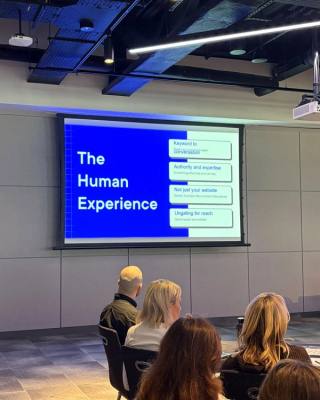There’s a new name in the world of branding. Monika.
In fact, according to Monika, there’s an entirely new type of brand name all together, one generated by large language models and then curated by human experts.

It’s certainly an interesting idea, and unsurprisingly we’re not the first to write about it. A recent article in Its Nice That provides a great overview of Monika and their process. To summarise, Monika will provide their clients with 20 bespoke AI generated brand names for $5000, and will deliver them within 5 days. This is accomplished by using an in-house model to write thousands of different names, which are automatically screened for copyright issues, and then curated into a handpicked list to be presented to the client.
Monika’s business model seems to be a clever and efficient combination of human and machine intelligence. In particular, it promises to leverage the ability of AI to work at scale, whilst freeing up human talent to make the most consequential decisions on brand strategy. As we’ve already argued with respect to web design, this could prove to be a fruitful combination in the creative industries. However, this novel deployment of AI raises some fresh questions about what it means to develop a brand, questions highly relevant to our branding work at Kooba.
Does a brand need a purpose?
The most obvious issue with the concept of an AI generated brand identity is that of purpose. At Kooba (as at most good branding agencies) the process of brand design begins with an understanding of the client’s business and their target audience. The brand, like anything we design, needs to accomplish a specific goal, normally by communicating a certain message about the company and its product. In short, first we define the purpose of a brand, and then we design the brand to accomplish that target.
Monika’s approach to branding challenges this assumption. Instead of first considering what the brand must do, a massive range of brands are generated, with those that seem best suited to the client then selected for presentation. A good analogy between these two approaches is that of intelligent design and natural selection. One sets out to solve a problem deliberately, the other eventually finds a solution through thousands of iterations. Of course, this is not to say that the latter strategy is inferior, but it does require certain conditions to be successful.
As in nature, evolution requires consistent and rigid selection criteria in order to produce more effective specimens. In other words, the humans selecting from different brand options need to make the right decisions every time. This is a big ask, especially given their isolation from the creative process of actually generating elements of a brand.
Does the process matter?
One clear downside of AI powered branding is the removal of human thought from the creative process. Rather than each element of a brand (or in the case of Monika, a name) being deliberately considered with specific goals and motivations in mind, a language model instead provides a set of outputs intended to seem as close as possible to a correct answer. Why does this matter? Ultimately, because a human can justify the reasons behind each design choice, but an AI model cannot. This is important in two ways:
- Firstly, a brand can be better explained to its audience when it has a real narrative behind its creation (hence why many companies like talking about their “mission” or “journey”).
- Secondly, it forces creatives to engage with their ideas prior to picking their final option. This creative process generates a greater understanding of each brand proposal, allowing a more informed and nuanced decision to be made about their strengths and weaknesses.
Given the wide range of scenarios each element of a brand can be used in, this “mulling over” of each idea is crucial in anticipating possible needs and issues prior to launching the final brand.
What is a brand?
Ultimately we need to return to the most existential question of all: What is a brand?
I would argue that a good brand, a proper brand, is developed in a holistic way. Why a brand is commissioned should inform how it is designed, and both should be reflected in what context it is deployed. Even if it takes slightly longer, it is worth engaging in this methodical process, precisely because it gives us the time to think over exactly how and why our design is going to be used.
That’s not to denigrate Monika, which is clearly taking brave steps towards the intelligent incorporation of AI functionality, but rather to defend the less trendy work of tried-and-tested human creativity. Sometimes if a job is worth doing, it really can be worth doing yourself.









